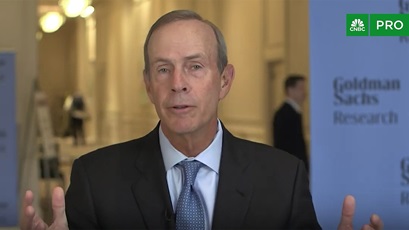emissions solutions
explainer: what is pore space?
1 min read | may 01, 2023
Carbon dioxide is stored in pore space, the tiny empty space between particles of sand and sediment.
Geologic carbon sequestration, or storing carbon dioxide (CO2) safely and permanently deep underground, is a promising technology in the effort to reach climate goals. And it relies on, well, a lot of nothing. Geologists call it pore space.
Similar to holes in a sponge, pore space is the empty space between particles of sand and sediment or the space within and between rocks. When we inject CO2 into the ground, it fills in these spaces.
why it matters
A component of carbon capture, utilization, and storage (CCUS), sequestration can help lower the carbon intensity of our operations and those of other industries, such as liquefied natural gas, refining, petrochemicals, power, steel and cement. While a number of considerations go into choosing a site for carbon storage, pore space is essential. Without it, we can’t store CO2 underground.
location, location, location
Ideally, geologic formations that could permanently store CO2 would be everywhere. But because there are limited possible reservoirs, transporting CO2 from industrial areas to those reservoirs is critical to gaining ground on CCUS.
A project to inject CO2 underground near businesses that have a high volume of emissions can be useful in developing CCUS hubs. These hubs allow each company to reduce their carbon intensity, noted Shalyce Holmes, who helps negotiate contracts for Chevron's right to use pore space. The potential storage site may be under land outside of major cities, in inactive oil and gas reservoirs, or offshore, deep under the seabed.
shalyce holmes
commercial advisor, corporate business development
a hot topic
After we find a location with the appropriate pore space, we need to acquire it or the right to use it. And that is no small feat.
Pore space ownership in the United States varies from state to state and can be owned by the State, by the U.S. government or private individuals. In other countries, subsurface rights are controlled entirely by the government.
In the U.S., Chevron negotiates with the pore space owner, who in most current instances is the same person who owns the land surface. That contrasts with mineral rights that are necessary for oil and gas development, which are frequently owned by someone other than the surface owner.
A CO2 reservoir can span multiple properties, requiring agreements with multiple landowners. A single reservoir can have hundreds of landowners.
As Chevron works to secure pore space agreements with landowners for a storage project, we work with the surface owners to compensate them for the pore space and, if applicable, surface area for things like injection wells, pipelines and facilities. Chevron aspires to be a partner of choice in working with landowners on the development of CCUS projects.
our expertise
Chevron helped pioneer injecting CO2 underground more than 40 years ago. We also have a team of experts in earth sciences who help us carefully choose a site and monitor it after injection.
topics covered
related content
-

 biodiesel helps cities lower emissions
biodiesel helps cities lower emissionsemissions solutionsfebruary 04, 2025
-

 chevron CEO discusses the future of energy
chevron CEO discusses the future of energyemissions solutionsjanuary 20, 2025
-

 novel ideas, established companies key to advancing lower carbon tech
novel ideas, established companies key to advancing lower carbon techemissions solutionsjanuary 14, 2025
-

 chevron CEO talks growing production, efficient spending
chevron CEO talks growing production, efficient spendingemissions solutionsdecember 18, 2024
chevron email updates
Subscribe to our newsletter to receive news and updates.



